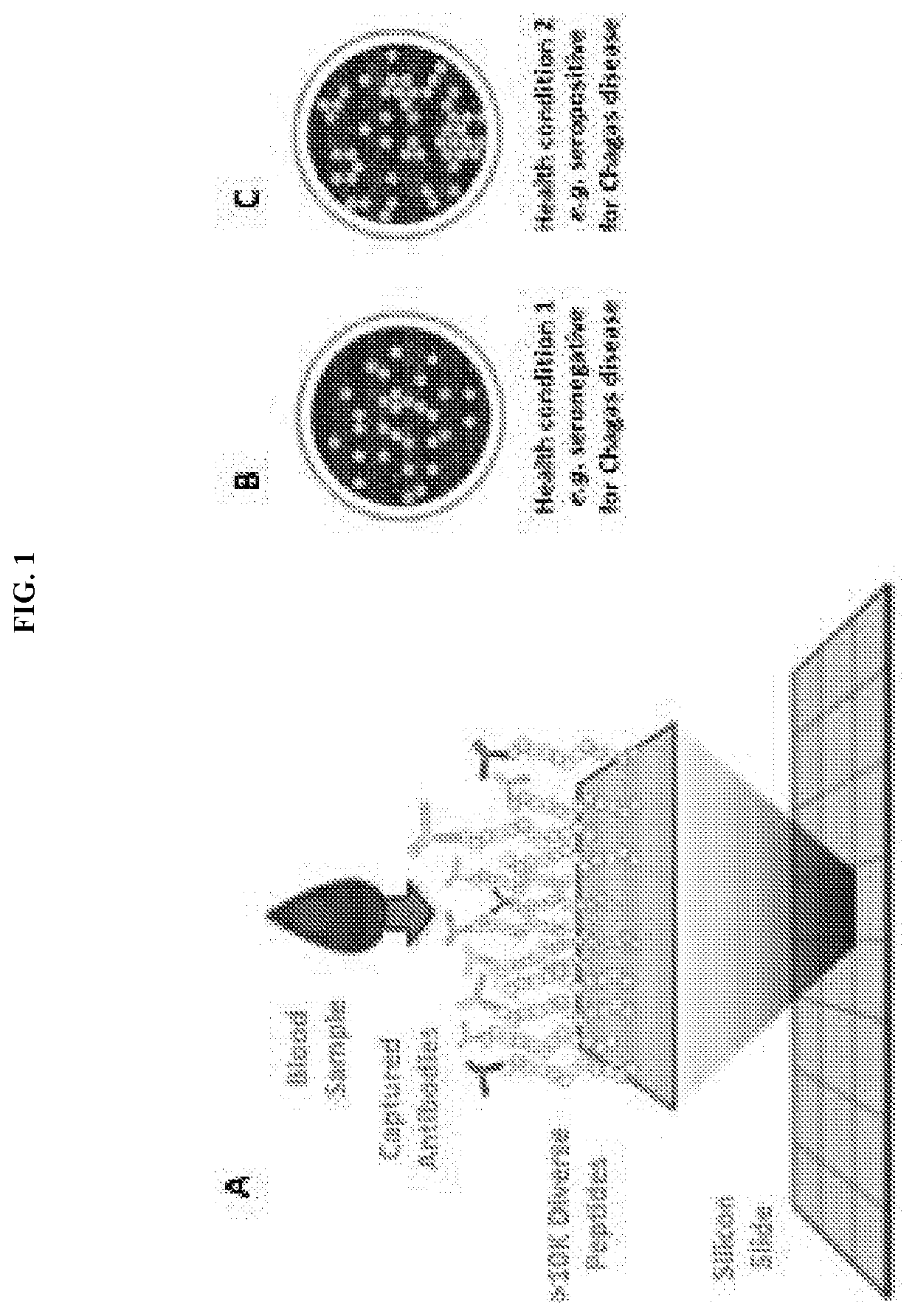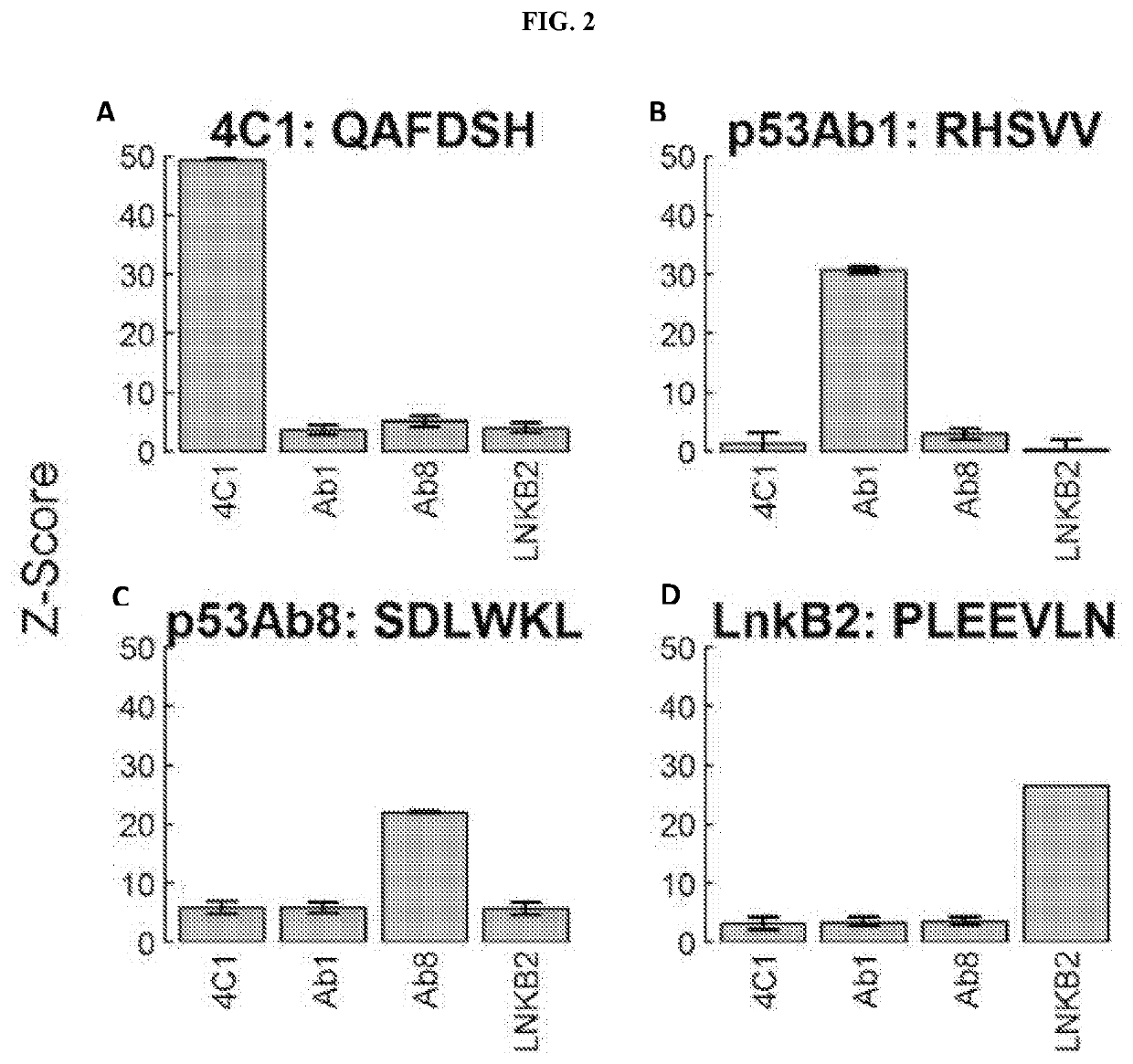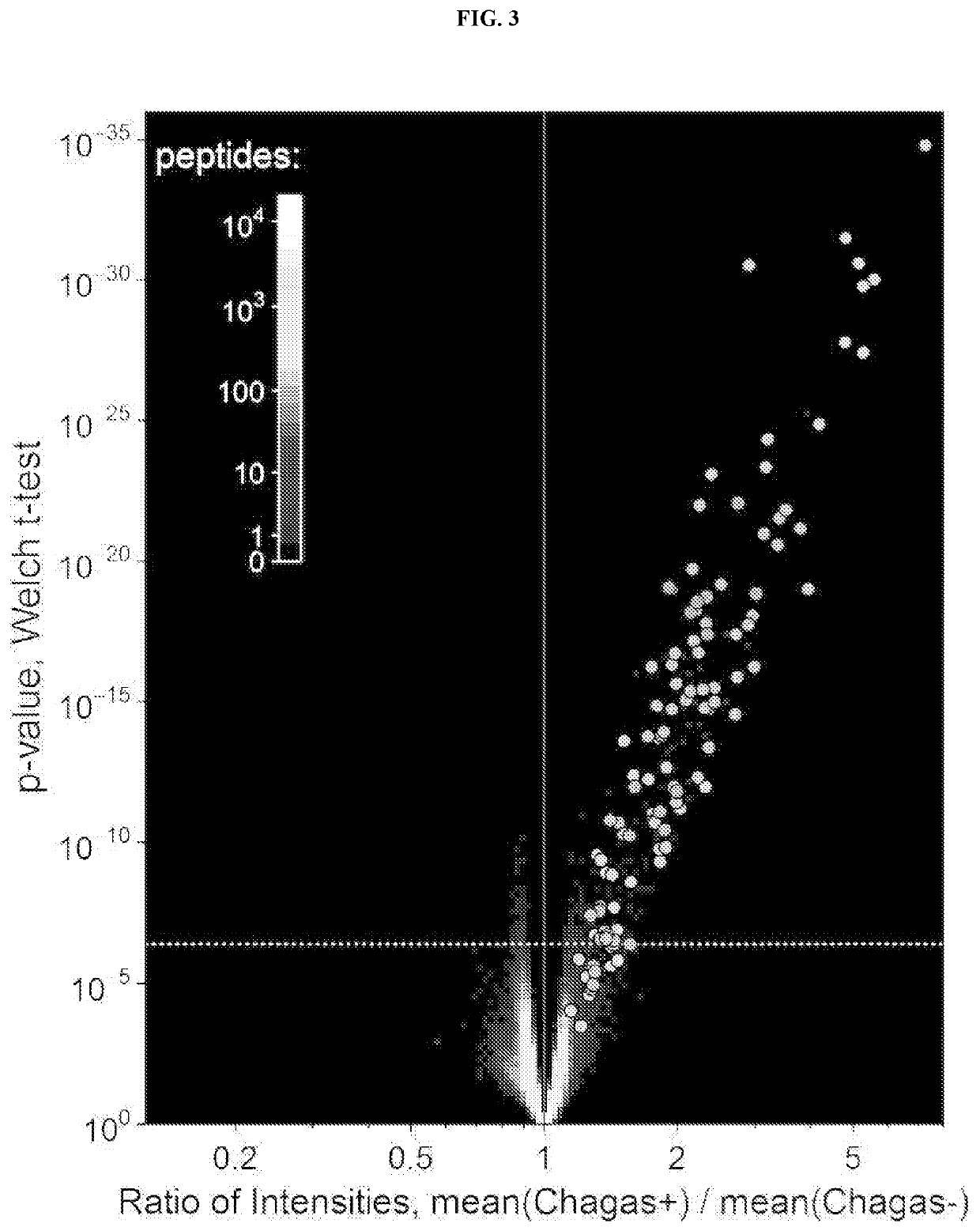Methods for screening infections
a technology for infections and methods, applied in the field of methods for screening infections, can solve the problems of unreliable detection of early detection of infections, time-consuming and laborious present methods, and varying degrees of expertis
- Summary
- Abstract
- Description
- Claims
- Application Information
AI Technical Summary
Benefits of technology
Problems solved by technology
Method used
Image
Examples
example 1
nature Methods for the Diagnosis of Infections
[0175]Immunosignature assays were developed to detect and differentiate T. cruzii, HBV, HCV, and WNV infections according to the following.
[0176]Donor Samples.
[0177]Donor plasma samples serologically positive for Chagas antibodies, along with age and gender matched healthy donor plasma, and plasma samples that tested seropositive for hepatitis B virus (HBV), hepatitis C virus (HCV) or West Nile virus (WNV) (WNV), were obtained from Creative Testing Solutions (Tempe, Ariz.). Two cohorts of samples were obtained, one in 2015 and a second set in 2016. Upon receipt, the plasma was thawed, mixed 1:1 with ethylene glycol as a cryoprotectant and aliquoted into single use volumes. Single use aliquots were stored at −20° C. until needed. The remaining sample volume was stored neat at −80° C. Identities of all samples were tracked using 2D barcoded tubes (Micronic, Leystad, the Netherlands). In preparation for assay, sample aliquots were warmed on...
example 2
Validation
[0202]Experiments were conducted using monoclonal antibodies to evaluate the quality of final in situ synthesized array peptide products with respect to ligand presentation and antibody recognition.
[0203]All diagnostic assays were conducted on a validated microarray platform.
[0204]A peptide synthesis protocol was developed in which parallel coupling reactions are performed directly on silicon wafers using masks and photolithographic techniques. Arrays displaying a total of 131,712 peptides (median length of 9 amino acids) at features of 14 μm×14 μm each were utilized to query antibody-binding events. The array layout included 126,009 library-peptide features and 6203 control-peptide features attached to the surface via a common linker (see Example 1). The library peptides were designed to evenly sample all possible amino acids combinations. The control peptides include 500 features that correspond to the established epitopes of five different well-characterized monoclonal ...
example 4
Mapping the Chagas-Classifying Peptides
[0219]The 356 IST library peptides that significantly distinguished Chagas positive from negative donors plus the 14 that were correlated to S / CO values were aligned to the T. cruzi proteome with a modified BLAST algorithm and scoring system that used a sliding window of 20-mers (Example 1). This yielded a ranked list of candidate protein-target regions shown in Table 2. These classifying peptides display a high frequency of alignment scores that greatly exceed the maximum scores obtained by performing the same analysis with ten equally-sized (370) sets of peptides that were randomly selected from the library (FIG. 6). For example, the maximum score obtained with the randomly selected peptides ranged from less than 2000 to 2500; whereas the classifying peptides generated an alignment score of 3500. Thus, in this instance, the classifying peptides provided a protein score that was at least 28% greater than that of the highest scoring random pept...
PUM
| Property | Measurement | Unit |
|---|---|---|
| area under | aaaaa | aaaaa |
| length | aaaaa | aaaaa |
| fluorescence in situ hybridization | aaaaa | aaaaa |
Abstract
Description
Claims
Application Information
 Login to View More
Login to View More - R&D
- Intellectual Property
- Life Sciences
- Materials
- Tech Scout
- Unparalleled Data Quality
- Higher Quality Content
- 60% Fewer Hallucinations
Browse by: Latest US Patents, China's latest patents, Technical Efficacy Thesaurus, Application Domain, Technology Topic, Popular Technical Reports.
© 2025 PatSnap. All rights reserved.Legal|Privacy policy|Modern Slavery Act Transparency Statement|Sitemap|About US| Contact US: help@patsnap.com



